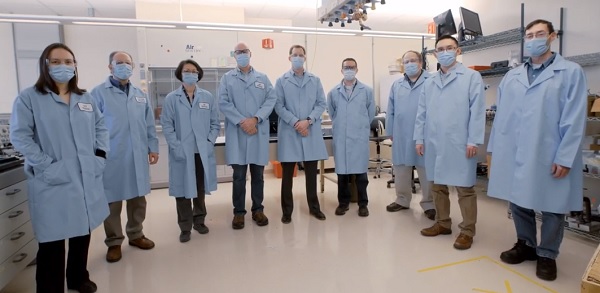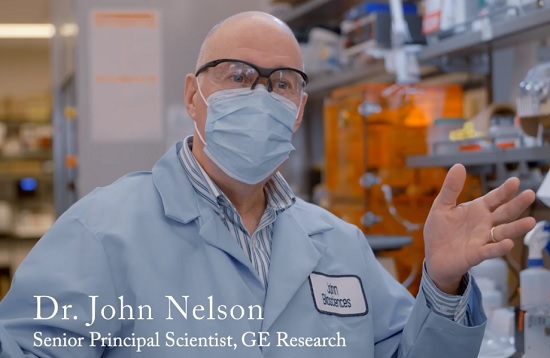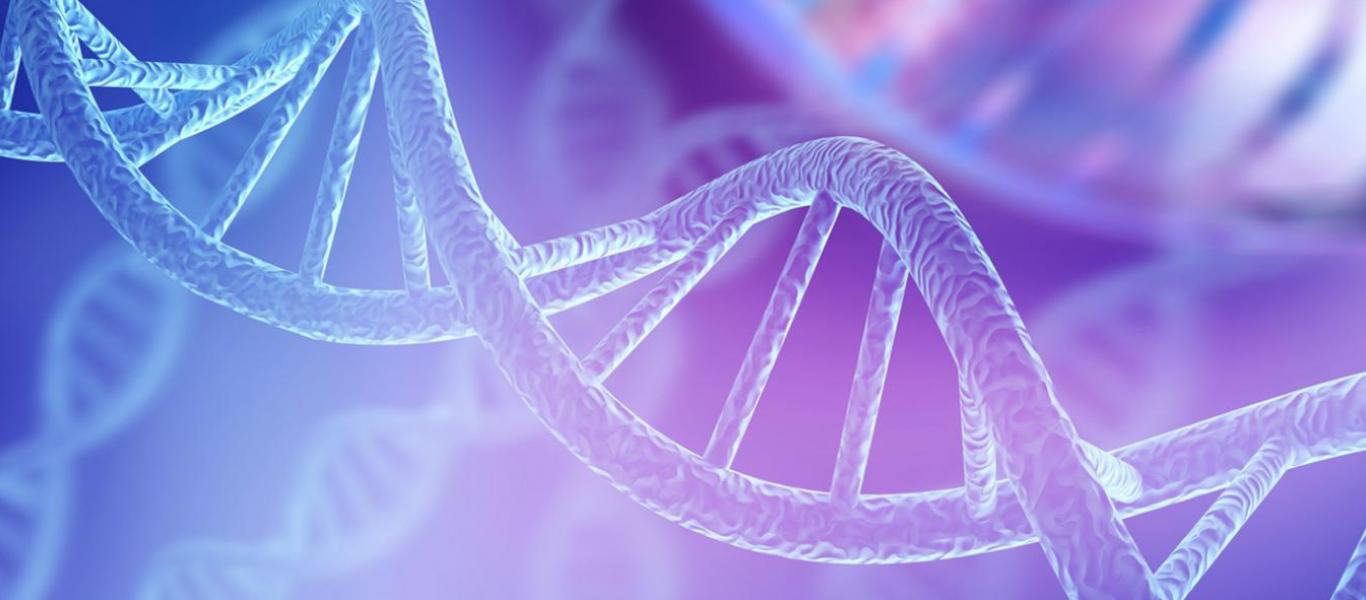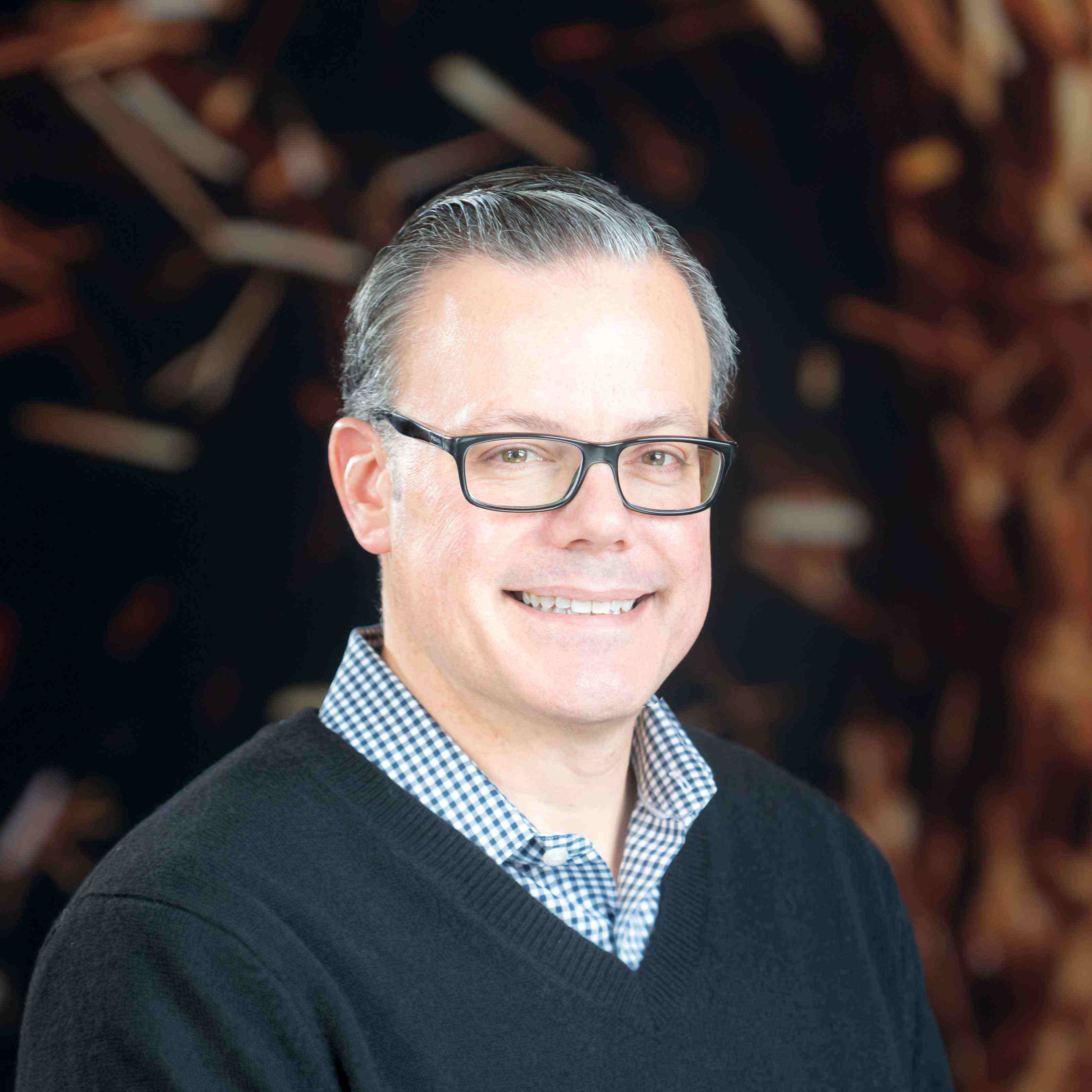
When you think of DNA and molecular biology, it turns out GE Research’s technical “ancestry” runs deep and could enable exciting new breakthroughs with future vaccines and therapeutics. Earlier this year, our vaccine dream team – nine GE Research employees – kicked off a project to develop a rapid, mobile medical manufacturing platform for producing, formulating, and packaging nucleic acid-based (DNA and/or RNA) vaccines and therapeutics. The project, detailed in this press release and this YouTube video, will enable vaccine manufacture and deployment in days rather than weeks.
Leading GE Research’s vaccine dream team is Dr. John Nelson, a well-respected molecular biologist who has authored 22 peer-reviewed publications and holds 64 U.S. patents. John maintains a project leadership position at GE Research where he oversees the company’s DNA-adjacent initiatives.
In honor of DNA Day – April 25 – we asked John about DNA, his favorite projects, and the role DNA is playing in tackling the COVID-19 crisis.
DNA Day celebrates the completion of the Human Genome Project in 2003 and the discovery of DNA's double helix in 1953. How did these two advancements enable the work that’s being done today?
The discovery of the DNA structure in 1953, and its double stranded redundant nature that allows it to be replicated, was a major turning point in the scientific community's understanding of how all living things keep track of their "instruction manual." Back then they didn't know how to read the instructions, but they knew at least what it was made of and how it could be manipulated by enzymes within the cell to be copied.
Fast forward 50 years to the completion of the human genome and not only did we know exactly how it was copied, repaired, and moved from one place to another, we also understood how it was organized, and most importantly, we had the entire instruction manual at our disposal. We could see how many genes there were and differences in them from person to person. This then ushered in a period of intense work involving "functional genomics" aimed at understanding what each gene does and how changes in them could make them work better or worse. But without knowing what DNA looks like and without knowing what and where all the genes are in the genome, there would be no way for researchers to ask specific questions like, "Why is this cell cancerous?" or more trivial, "What is my ancestry?"
Tell us about where DNA research is today – are we on the brink of any major discoveries and if so, what would they mean for the world of science?
There a few DNA research areas that are right at the cusp of taking off. Gene editing is finally becoming a more reliable tool that researchers can use to help ask very specific questions about how genes work in living cells. This is significant, as it would allow researchers to make changes directly in the chromosome at the gene's normal location and observe what happens. This then helps to understand the consequences of DNA variation and how it affects function.
In the DNA synthesis area, technology is being developed to produce larger and larger sections of DNA. This is useful as it allows researchers to create entire sections of a chromosome. When you think about manipulating algae to produce biofuel or bacteria to produce useful drugs, the reality is that these new "designer" organisms will need significant chucks of DNA added to their genome, entire gene pathways, and the new technologies should help scientists to make these sections exactly the way they want.

You are a molecular biologist with more than two decades of experience. What excites you today about the world of DNA? What drives you to continuing researching?
I like to look for problems then devise unique ways to solve them. I sometimes say that I do stupid enzyme tricks. And most of these tricks are enzymes that do something with DNA or RNA. The DARPA program we are working on is one example of this. The world needed a fast way to make grams of DNA and we have developed a method using an enzyme that can make in a day what would normally take a month. In another program, NIH asked for a very sensitive method to detect the SARS-CoV-2 virus, and GE Research came up with an idea to use DNA as a lasso to grab the virus and hold it right next to our sensor. Read more here.
In the world of DNA there's always a new problem to tackle and the tools are always evolving, getting better. You have to pay attention to the advances and look for tough problems that can only be solved by pushing the technology forward. The benefit of GE Research being at the center, and what is exciting about solving problems here, is that we have experts in so many things that we can tackle an enormous range of huge challenges.
COVID-19 is caused by SARS-CoV-2, a new virus with much still unknown. Can you talk about how DNA is playing a role in how we’re combating the pandemic?
The two RNA vaccines are obvious examples. Both of these are made using a DNA section that has been created with the instructions for the SARS-CoV-2 spike protein. Once researchers sequenced the genome of the virus, the spike protein sequence was identified, and its instructions were inserted into the DNA section so that an RNA strand could be made for injection as a vaccine.
This is called recombinant DNA technology, and similar DNA engineering, is being used to code for other vaccines; for instance, to create novel viral delivery vaccines like the J&J and Astra Zeneca vaccines. Also, the antibody therapies are produced using recombinant DNA technology. And of course, the sensitive nucleic acid tests performed on those nasal swabs and saliva samples all use DNA-based molecular biology tools. So really, DNA is an essential component of our entire response.
What does the future of DNA research look like? What will be the biggest challenges for the next generation of molecular biologists?
One of the guiding organizations in this area is the National Human Genome Research Institute (NHGRI) at the NIH. They are continually refining their roadmap for technical development, and this then helps fund basic research in the area. Some of the exciting thrusts include dramatically increasing not only our understanding of genomic data, but our ability to sequence virtually anything in any lab in just a few hours. Combined, these two advances could allow medical professionals to make much more accurate diagnosis and identify exactly the correctly drug to treat a problem. Beyond that, sequencing technology will likely move into other fields, for instance food analysis, environmental monitoring, and veterinary practice to name a few.
GE's vaccine dream team, pictured at the top, includes: John Nelson, Weston Griffin, Erik Kvam, Brian Davis, Zhen Liu, Alex Corwin, Wei Gao, Kenneth Conway, and Svetlana Bakhmatova
We're here to solve your toughest problems.






